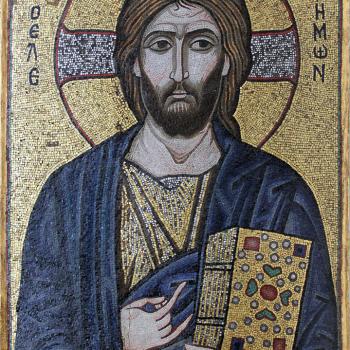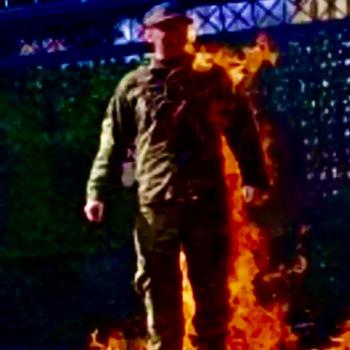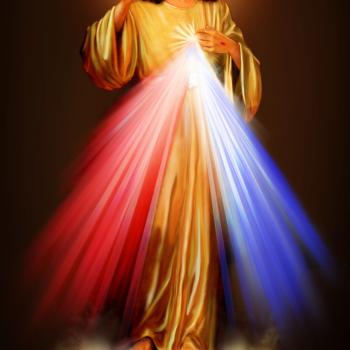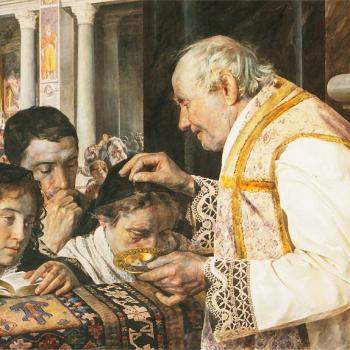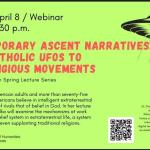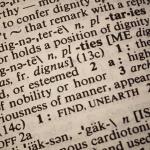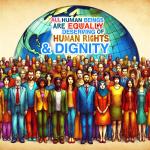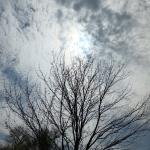Vox Nova is pleased to present the following guest post by Rhonda Miska, a candidate with the Dominican Sisters in Sinsinawa, WI. This piece was originally published on Daily Theology.
Celebrations of today’s 241st anniversary the Declaration of Independence’s signing and the recent controversy around the removal of Confederate monuments invite theological reflection on the public remembering of history. Human beings create memorials: external structures to celebrate and commemorate, mark collective grief, teach future generations and transmit values. We change the physical landscape to proclaim that something mattered and is worthy of remembrance.
Do our memorials reflect the perspective of the victors of the victims of history? For Johann Baptist Metz, whose theological formulations were shaped by the Holocaust’s horrors, political theology starts with memory–especially memory of those on the underside of history. For Metz, “dangerous memory” of the anawim are linked to dangerous memory of Jesus, the ultimate victim of history who is remembered at each Eucharist. Such memories guide us in radical discipleship and eschatological hope. In order for our present to be troubled and transformed by dangerous memories, the past must be publicly remembered from the perspective of history’s victims.
“A city is a book we read by wandering its streets,” writes Rebecca Solnit. What is read in the book of our memorials? How do our cities’ memorials shape our civic identity and express our collective commitments? How are dangerous memories voiced or silenced in public spaces?
I offer three snapshots from recent Dominican-in-training itinerant wanderings.
January 2016, Southwark, London, England
On an uncharacteristically sunny day, I take in this metropolis, heavy with history and filled with plaques, monuments, and markers which commemorate many notable women and men. Westminster Abbey’s monarchs, musicians and poets. The RAF, the women of World War II and others military figures. London’s literary greats –T.S. Eliot, Charles Dickens, Virginia Woolf–named on blue round markers.

Red Cross Way Memorial, London, UK. [Photo: Rhonda Miska]
The memorial at Red Cross Way stands in stark contrast. This small plot of land in the shadow of the über-chic Shard and was once a plague pit and a pauper’s grave. This neighborhood was an overcrowded medieval slum, home to many prostitutes and their children. The prostitutes were licensed (and taxed) by the Bishop of Winchester and thus enjoyed a measure of protection in life, though they were excluded from Christian burial. This plot of unconsecrated ground–euphemistically known as “the Single Woman’s churchyard”–became the final resting place of the abject poor whose lives were claimed by syphilis, cholera, tuberculosis, or simple malnutrition. An estimated sixty percent of the 15,000 bodies buried there were children. The unmarked graveyard was forgotten until, in the 1990s, the London Underground was expanding and bones were discovered.

Red Cross Way Memorial, London, UK. Goose-shaped Entrance. [Photo: Rhonda Miska]
The Friends of Cross Bones created a Garden of Remembrance to “honor the outcast” of this grave pit. The prostitutes were derisively known as Winchester geese, thus the garden’s covered wooden entrance is formed in the curved, elegant shape of a goose’s wing. Strips of cloth tied to the rusted fence flutter in the wind like prayer flags. Centuries after these women and children endured the indignities of poverty, disease, and exclusion, their final resting place is now a hallowed shrine.
These people lived and died and mattered. Nameless yet beloved by God.
Animas, New Mexico, January 2017
Off a gravel road, near the New Mexico-Arizona line, the sun beats down out of the broad, cloudless sky. Here, amid scrubby grasses, cacti, and crucifixion thorn, a man’s body was found on May 4, 2006. He is known simply as no identificado.
Thirty of us gather in a circle around a makeshift altar: a cloth image of Nuestra Señora de Guadalupe, a conch shell, a hand-written psalm, a rosary with rosewood beads worn smooth. Several of us take turns with a post hole digger–slow work given the hard packed earth. As the rough wood of the post hole digger leaves red marks on my hands that will blossom into blisters later that day, I imagine the desconocido’s blisters and callouses from his trek. I guzzle water from my bottle.

Cross planting for a desconocido in Animas, NM. [Photo: Rhonda Miska]
Finally, once the hole is deep enough, Sister Mary Ann places a wooden red-painted cross marked desconocido into the earth. Cement is mixed in a five gallon bucket, then poured in and topped with small rocks. This is not an ephemeral marker. We sing, we pray, we stand in silence.
The memorial proclaims the dignity of the unknown life claimed by hyperthermia. This is a cross planting–planted with the hope of fruits of justice and solidarity, advancing the vision of a hemisphere where workers are not criminalized, families are not separated, humans do not die en route to landscaping jobs.
This man lived and died and mattered. Nameless yet beloved by God.
New Orleans, Louisiana, May 2017
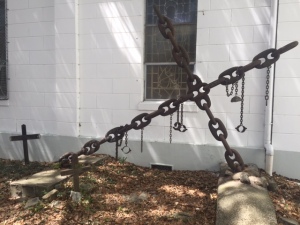
Tomb of the Unknown Slave, New Orleans, LA. [Photo: Rhonda Miska]
In the quiet churchyard of St. Augustine’s, the first African-American parish in the United States, the Tomb of the Unknown Slave designed by Fr Jerome LeDoux, SVD, offers silent witness. In the shade of a giant oak, huge marine chains–extracted from the Mississippi River where numerous slave bodies were dumped–form a large cross. From the cross hang hand and foot shackles like those used in the capture and commerce of human beings. A plaque reads: “There is no doubt that the campus of St Augustine Church sits astride the blood, sweat, and tears and some mortal remains of unknown slaves from Africa and local American Indian slaves … The tomb of the unknown slave is a constant reminder that we are walking on holy ground.”
Sister Mary Ellen and I pray aloud, reaching for words to lament slavery’s evil and express our grief at the wounds of racism made so painfully clear in the controversy over the removal of Confederate monuments just a few miles away.
These men, women and children lived and died and mattered. Nameless yet beloved by God.
We cannot know the particular stories of the Southwark prostitutes – their hopes, fears, faith. We cannot know that desconocido’s final thoughts and prayers. Though we have accounts gathered through the Works Progress Administration of children born into slavery, we cannot know the stories of the particular slaves remembered at St. Augustine’s.
Though their testimonies are forever lost, these three memorials–which honor not the conqueror but the conquered, not the victors but the vanquished–shape our present landscape with a visual witness of dangerous memories.
This Fourth of July, as we remember our nation’s beginnings, where are those on the underside of history remembered? Where might we lay a stone of remembrance to honor the unknown, desconocido outcast dead and be challenged by their dangerous memories?





